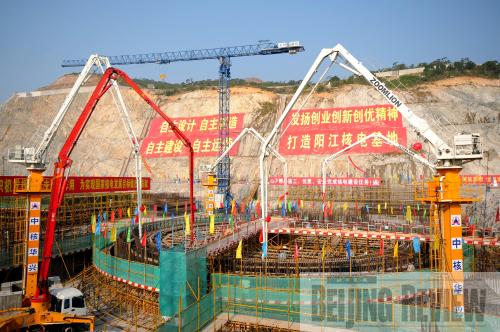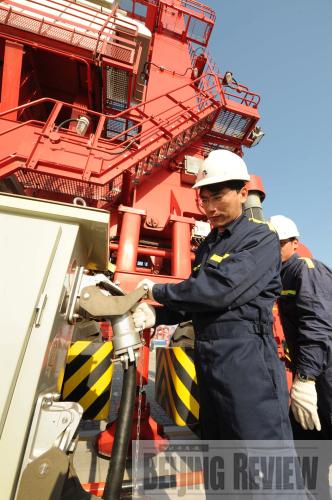|
 |
|
HARNESSING NUCLEAR: Construction on the Yangjiang Nuclear Power Plant, the largest in China, began in December 2008 (LIANG WENDONG) |
When Chinese President Hu Jintao attended the UN climate summit on September 22, he made a solemn commitment that China will cut its per GDP unit carbon emission to a significant amount in 2020 compared with that of 2005. Economic Information Daily, with Xinhua News Agency, published a series of articles extending China's stance on carbon reduction. Edited excerpts follow:
The United Nations Climate Change Conference Copenhagen 2009 will be held at the end of this year and will discuss the post-Kyoto Protocol carbon emission reduction targets. As one of the biggest carbon emission countries, China will face enormous pressure from developed countries. Signs loom that developed countries intend to politicize climate change to gain economic benefits.
China has been reiterating its opposition to so-called "green protectionism," which places a high carbon tariff on products with high carbon emissions in the name of environmental protection. Internationally, China insists developing countries not shoulder emission reduction responsibilities that might be imposed by developed economies.
 |
|
GREEN PORT: Workers are upgrading Taicang port machineries in east China's (SUN SHEN) | Analysts contended that the concept of a "carbon tariff," proposed by the United States, is meant to improve its international image as a reluctant respondent to actually coping with climate change. Meanwhile, covered by the carbon tariff, it will require developing countries such as China, India and Brazil to reduce their carbon emissions, in turn crippling their exporting strength and stifling the rise of the emerging economies.
China must be cautious about the follow-up measures that might be adopted by the United States and oppose any protectionism under the disguise of green growth.
International stance
In terms of setting up greenhouse gas emission and reduction targets, developed countries must quantify their emission reduction commitments and provide reduction technology and capital aid to developing countries.
First of all, judging by per-capita carbon emissions, China remains below the world's average level. According to a recent World Bank report, the average annual per-capita carbon emission of the world is 4.3 tons; China is around 4.1 tons; while that of the United States stands as high as 19 tons. Developed countries' emissions are centered around "luxurious enjoyment," while developing countries burn coal for economic survival and development. Naturally, developing countries require that developed countries shoulder more responsibility in carbon emission reduction.
|
